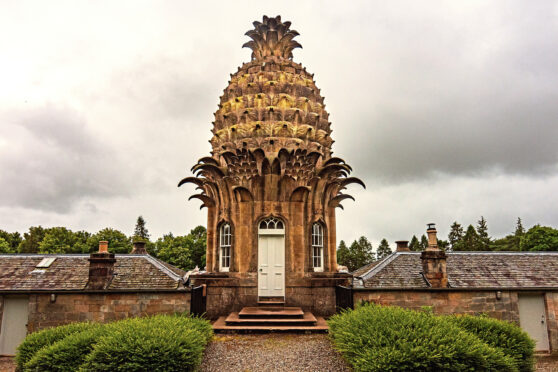
There are thousands of ornamental buildings created with no obvious purpose but to enhance their surroundings. Yet there’s more to follies than meets the eye, says author Celia Fisher, who tells Laura Smith the Honest Truth behind these fascinating feats of eccentric architecture.
What are follies?
It’s tricky to define follies, they are so many and so various. It’s not correct to dismiss follies as buildings without a use, although it is right to define them as surprising and ornamental architecture, because that is the main characteristic which makes them follies.
Most follies were built with another purpose in mind, as either viewfinders, eye-catchers, hunting lodges, political statements, retreats or even to impress or annoy the neighbours.
Where does the term come from?
The name “folly” comes from the French word for madness (or the adjective in its feminine form), and during the 18th Century in France folie was sometimes applied to delightful and extravagant buildings.
But those who built follies seldom called them so, they had individual names of their own.
There are thousands across the UK.
Where and when did the trend begin?
The first picture in the book is called Building The Tower Of Babel, from a medieval manuscript, so the idea of mocking extravagant buildings has been around for a long time.
The first folly in England was a little island banqueting house built by King Henry V.
More such pleasure domes appeared in Tudor and Stuart times, but the golden age of folly building was the 18th Century, when every landscape garden needed follies to adorn the vistas, and more were built in England than anywhere else.
What are some particular reasons people have built follies?
A lot of the most unusual follies were architectural fashion statements. For example the craze for chinoiserie; or the picturesque movement which embraced the gothic style with fake ruins and castellated battlements.
The purposes of individual follies would include view finders, picnic spots, boat houses, animal shelters – or a folly might be devoted to a particular hobby like astrology or, in the case of grottoes, collecting minerals, shells and fossils.
Some of your favourite follies?
Many of my favourite follies still stand, thanks to the Landmark Trust, which has rescued many and restored them as holiday lets, enabling people to stay in tiny pavilions and tall towers all over the UK.
Among gothic follies the Landmark Trust offers us The Temple of Liberty at Stowe, a haunting triangular building with ecclesiastical windows and pinnacled turrets, or go to Bath where Beckford’s Tower is high on Lansdown Hill.
Incidentally, the folly for which most credit is due to the Landmark Trust is Clavell Tower on the Dorset coast, which was rescued from a crumbling clifftop and re-erected a little further back. There it stands, safe, serene and circular surrounded by wild flowers.
What are some famous follies in Scotland?
Many, including the Dogg Kennell in Chatelherault Country Park near Glasgow, built by William Adam in Palladian style to house stables, kennels and a hunting pavilion.
Also, the beautifully gothic Hundy Mundy Tower in the Borders, which stands silhouetted against the sky on a hill top, now surrounded by burial grounds.
Most famous of all is the Pineapple on the Dunmore Estate built by John Murray, 4th Earl of Dunmore and the last British Governor of Virginia.
In America, the pineapple was a symbol of prosperity and welcome, and so it became in the UK, most notably in this architectural masterpiece. Originally, it was a garden pavilion between the hothouses where pineapples were grown and the gardeners’ bothies.
The Landmark Trust has restored it as one of its most prestigious holiday lets.
The Story Of Follies: Architectures Of Eccentricity, by Celia Fisher, Reaktion, is out now

Enjoy the convenience of having The Sunday Post delivered as a digital ePaper straight to your smartphone, tablet or computer.
Subscribe for only £5.49 a month and enjoy all the benefits of the printed paper as a digital replica.
Subscribe